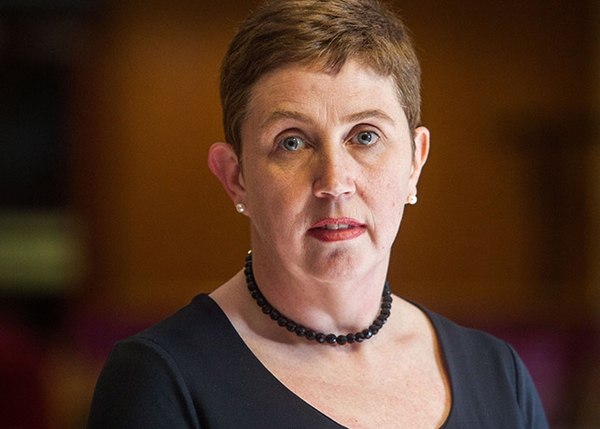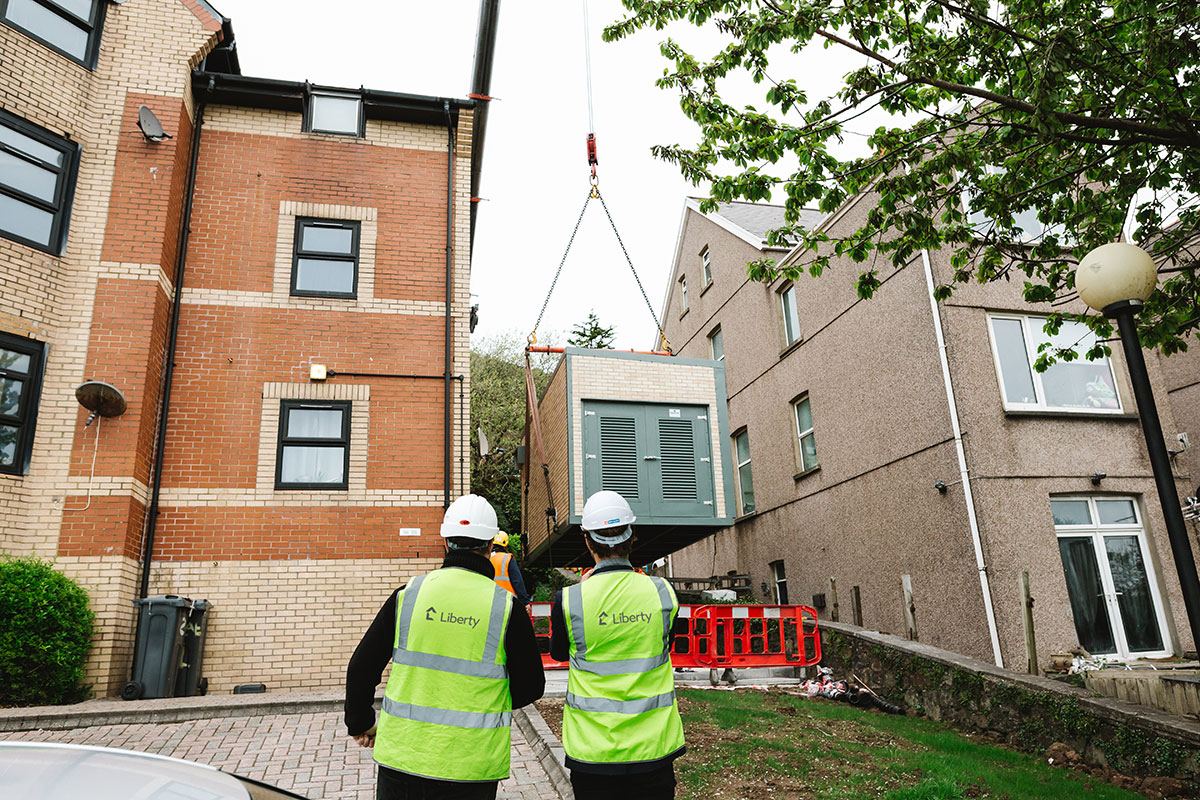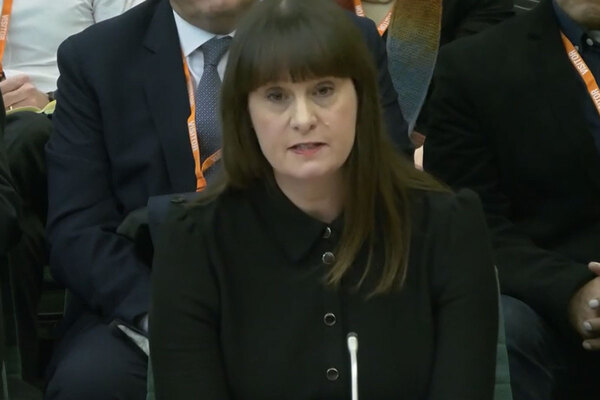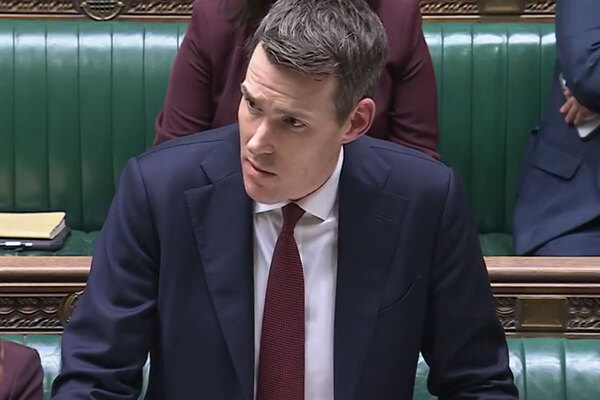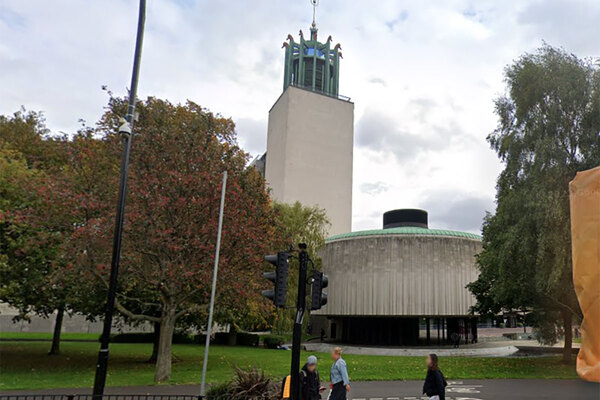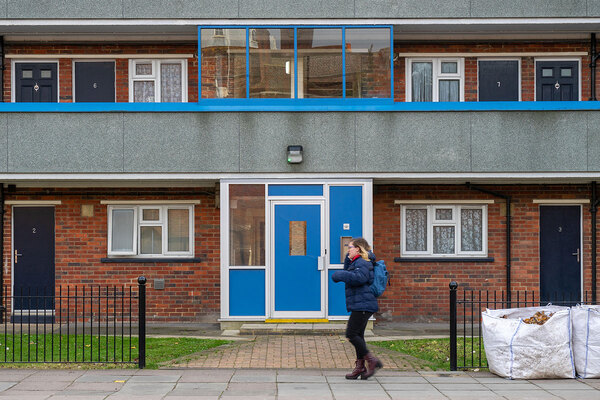Cornwall: the plan to decarbonise homes by 2030
Edwina Hannaford of Cornwall Council explains how the authority is tackling climate change, while the group managing director of Liberty suggests ways that the housing sector can play its part
In association with:

When Cornwall Council passed an ‘urgency on climate change’ motion last January, we were tasked to come up with a plan to enable Cornwall to cut its carbon emissions and help slow global warming. But we went one step further – amending the motion to declare a climate emergency and calling on Westminster to give us the powers and resources necessary to enable our county to strive towards becoming carbon neutral by 2030.
In July this year, our cabinet gave unanimous backing to our emerging and ambitious climate change plan – the culmination of conversations with thousands of residents, businesses, community groups and partners, and tireless work by a devoted team of council officers. It marked a significant moment in the start of our journey to lead Cornwall in this vital cause.
We have announced many exciting projects: the Forest for Cornwall, energy efficiency improvements to existing council-owned homes, transforming our fleet to ultra-low-emission vehicles, changing our planning policies to encourage the switch to more renewable energy generation and considering climate change in all our decisions.
“A whole-house retrofit pilot would see energy efficiency improvements fitted in Cornwall Housing homes, helping reduce fuel poverty for residents on low incomes”
We are submitting an application to the Department for Business, Energy & Industrial Strategy’s Whole House Retrofit innovation competition to show that we can deliver a cost-effective model of making energy efficiency improvements to Cornwall’s 10,000-plus social homes. The model developed would be designed to be replicable so it can be applied by other social landlords in Cornwall, as well as offered to owner-occupiers and to the private rented sector across Cornwall, the hope being that this model can then be deployed by other rural areas with similar housing stock and climatic conditions across the UK.
Another of our key climate emergency actions is a planning shake-up to strengthen our existing policies in the local plan. This will promote renewable energy, environmental growth and energy-efficient homes, increasing employment opportunities and generating more of our own energy. We will have new planning guidance on renewable energy installations, the Forest for Cornwall, coastal change and carbon-neutral homes.
Our commitment to tackling climate change will always be symbiotic with meeting the needs of our most vulnerable residents.
Retrofitting homes may well cut emissions, but it also leads to lower heating bills and reduces fuel poverty.
Electric transportation should reduce running costs and improve air quality. A low-carbon economy will provide new jobs, while the Forest for Cornwall will provide better access to nature for all. Our measures to tackle climate change could result in health benefits for residents from better air quality, warmer homes, increases in walking and cycling and healthier diets. Doing this would not only be better for the environment and residents but could in turn reduce health and social inequalities and lessen the demand on the NHS and social care.
“Retrofitting homes may well cut emissions, but it also leads to lower heating bills and reduces fuel poverty”
But there will almost certainly be difficult decisions in the future about prioritising scarce council resources. Some socially beneficial projects may have a high carbon intensity, but we will always aim for the overall goal of reducing emissions and include mitigations where possible.
The evidence of climate change is irrefutable. Extreme weather events are now becoming commonplace, and Cornwall is not immune to these changes.
Climatic systems are interlinked; we are all vulnerable to the impacts of climate change, and equally we all have a responsibility and an opportunity to make a difference. We are fortunate to live in a beautiful part of the world, one in which our natural environment is breathtaking and part of our cultural identity – but we cannot take this for granted. We must treat climate change as an emergency in order to create the foundations of environmental stewardship for our beloved Cornwall for future generations.
In compiling our climate emergency plan, we spoke to more than 3,000 residents, engaged with a multitude of stakeholders and listened to young people who have made the strength of their feelings very clear. What comes over loud and clear is that people in Cornwall want to know how to play their part – and small steps can make a big difference to help us tackle climate change.
We have started and will continue a Cornwall conversation, as meeting our aspirations is not something we can do alone.
Every organisation, resident, community group, town and parish council has a shared responsibility to embark on a journey to find solutions that will reduce our impact on the planet and show that Cornwall is leading on this issue, building on the tremendous work that we have already undertaken through our Green Cornwall programme and our environmental growth strategy.
It will not be easy, but that does not mean we should back away from the challenge. We must start this journey now. If other parts of the world choose not to act, that should not define what we do. We are going to lead.
“While there is a need for urgency, I also strongly believe there is hope”
Complex and systemic changes are required from a wide range of stakeholders. We all need to work together to change the way we live, travel, work and define success in a rapidly changing world. New technologies, natural climate solutions, behavioural change, local action and government support will all be crucial in helping us achieve our ambitions.
While there is a need for urgency, I also strongly believe there is hope.
The process of pulling our plan together has galvanised action, bringing people together from diverse backgrounds for a common cause that is high in the public consciousness. We cannot afford to fail, and Cornwall will build on its leading role to become an exemplar for what regional leadership can do in combating climate change. I am grateful to our communities already taking positive climate change action and I call on all councils to join us in fighting the climate emergency.
Edwina Hannaford, cabinet member for climate change and neighbourhoods, Cornwall Council
Decarbonised heat: opportunities and new technologies
Ray Jones, group managing director, Liberty
The government plans to end the installation of gas boilers in new build homes from 2025.
This will have huge implications for the sector as the country pushes to be carbon neutral by 2050, as currently, about 14% of the UK’s greenhouse gas emissions come from homes.
This brings significant opportunities and challenges.
As a property services company covering all aspects of asset management, Liberty is taking a commonsense and smart approach.
Trialling new technologies
This means robustly testing and trialling emerging technologies, from air source heat pumps to battery storage, to identify the solutions that will create the best outcomes for the landlords we work with and their tenants.
These technologies can provide a cost-effective and reliable way to heat homes. However, to install them at scale, the whole supply chain needs to catch up in terms of its capability to deliver products in large quantities that meet the new standards.
Retrofitting these emerging technologies will mean significant refurbishment or the installation of complementary technology. Battery storage and solar PV can offset the costs to the end user by generating and storing electricity on site. Increased home insulation can reduce the amount of heating a home requires. But both of these increase the upfront cost.
This will continue to be a real challenge, particularly when addressing the issue of fuel poverty.
At Liberty, we believe that investing in battery storage and solar PV could help landlords deliver mass retrofitting of electrical heating systems at affordable prices.
We are piloting projects to store the electricity generated through solar PV installations in homes that can be sold back to the grid. This has two main benefits:
- Using electricity generated on site reduces energy bills for tenants
- Landlords can generate an income from selling excess electricity to the grid
Another major issue is the shortage of engineers who are trained to install these emerging technologies.
This is something we have already started to address. The Liberate Academy, an in-house training centre, is training engineers to be air source heat pump qualified.
Retraining large numbers of engineers is a significant undertaking, but something the sector must get behind to ensure we meet the future needs of landlords and their tenants.
Preparing for the future
It is also important to recognise that gas will remain a major part of the UK’s energy mix for many years to come. But the heating sector must adapt to meet the needs of the carbon neutral agenda.
Liberty is passionate about this and has been proactive about developing better ways to provide energy to homes.
Evidence is key. We continue to evaluate the impact of renewable technologies, building the evidence base, so that landlords know they work reliably and understand the benefits they can offer.
While there is still a way to go and many challenges to overcome, this evolving marketplace provides huge opportunities that the industry must grasp to prepare for the changes ahead.
Article written by:

Going green
A new air source heat pump system being craned into place to heat properties in South Wales
Low-carbon heating and electricity systems are the future. We look at how two housing associations and their tenants are benefiting from more environmentally friendly solutions.
Linc-Cymru
Air source heat pumps
- Two communal air source heat pumps supply heating and hot water on two sites
- Systems are predicted to save 66 tonnes of CO2 each year
Heating our homes with gas boilers will soon be as outdated as smoking in restaurants. Earlier this year, the government mandated that homes built after 2025 must use low-carbon heating technologies instead – but some in the housing sector are already ahead of that curve.
On two sites in Wales – one scheme in Port Talbot and another outside Cardiff – Linc-Cymru Housing Association has recently installed two communal air source heat pump systems that will supply heating and hot water to each of the flats in two developments – even in the depths of winter.
Air source heat pumps work like a fridge in reverse. They use warmth from the air to heat a refrigerant liquid, and a compressor then concentrates and increases the heat, which is transferred to a property’s hot water circuit. The pumps can operate in temperatures as low as 15˚C.
In each of Linc-Cymru’s two installations, a large air-condensing unit draws in air and extracts the heat from it. This is then transferred to a plant room – each of which has been constructed offsite and craned into place – and from there it is distributed throughout the developments, supplying each flat with a steady and endlessly renewed supply of hot water and heating. The systems are predicted to save 66 tonnes of CO2 each year, which would be a 77% reduction in carbon emissions compared with the old gas boilers.
The systems have not been switched on yet. When it is cold, they have to work harder, which means drawing a fair amount of electricity from the grid – more than can safely be drawn from a domestic supply. Western Power, the electricity grid operator in South Wales, is currently upgrading its infrastructure across the region to prepare the way for more systems like these, and Liberty expects Linc-Cymru’s heat pumps to be hooked up and switched on by the end of September.
Above: A short video showing the first communal air source heat pump system installed by Liberty for Linc-Cymru
This is the first communal system that Liberty has installed, but Gavin Derbyshire, energy project manager at Liberty, who has carried out the installations on behalf of Linc-Cymru, reckons this could be just the start.
“The technology has been around for quite a while now, but it hasn’t been implemented,” he says. “The cost [of installation] is quite significant, but with it being zero carbon – it runs off the
electricity supply – it’s much more environmentally favourable.”
But thanks to the government’s renewable heat incentive (RHI) – a scheme through which the government will subsidise installations of low-carbon tech like this, to an amount that depends on the heat output generated – the system should pay for itself, with payments made over a 20-year period. And if housing providers cannot stump up the cash themselves, it can make a tasty investment opportunity for patient funders thanks to the guaranteed RHI payments.
“Tenants get a very efficient energy system that’s carbon neutral; the housing association doesn’t need to make an outlay, it can just have it fitted – and the funders get a nice return on their investment over 20 years,” says Mr Derbyshire.
ForHousing
Solar/battery storage
- Tenants in around 1,500 homes benefit from free solar-generated electricity
- A year-long trial is testing what energy savings are generated
Of ForHousing’s 24,000 properties, around 1,500 have solar panels. When tenants are home during daylight hours, they can benefit from free electricity. But what about at other times of the day?
“If [tenants] are not in, or not using the full amount of electricity being generated, the rest gets exported to the grid – and they don’t benefit from those energy savings,” explains Jonathan Newton, energy and sustainability manager at ForHousing. “That’s where the battery storage pilot came in.”
ForHousing is in the final stages of installing batteries – provided by UK-based manufacturer Powervault – in five properties of varying types across Salford. The concept is simple: any energy generated at times of low demand will be used to charge the batteries, which can then power the homes as winter sets in.
The year-long trial will test how well the systems work, what energy savings they create, and whether they are able to offer a grid-balancing function: importing or exporting energy to the local grid to help balance supply and demand, and creating revenue in the process.
Each installation has cost around £4,000. “As we get better at installing them, and the more units we buy, that cost will come down,” says Mr Newton. Installation takes around a day, although he believes this could be done more quickly in the future.
The advent of smart metering could also offer possibilities of greater savings for tenants using battery storage technology. Energy supplier Octopus Energy has introduced time-of-use tariffs for customers using smart meters, and ForHousing will be working with them during the pilot.
“The tariff can change on the hour; the prices are announced the day beforehand, and the Powervault unit will know when the cheapest energy is and will look to store electricity during those hours,” says Mr Newton. “We want to see what benefits that might offer.”
So what would a successful trial of this new technology look like? “We want to find out what properties are most suitable, and how much energy savings the tenants will benefit from,” says Mr Newton. “A blanket approach won’t save everyone money. I’d be looking at saving tenants at least £100 per year, and then whatever else we can get out of it – such as grid balancing.”
While this pilot is looking primarily at how these systems can benefit ForHousing’s tenants, it also has an eye on the future. The biggest issue with solar and wind power is their intermittent supply – which is why, Mr Newton says, battery technology will have to become a big part of the UK’s efforts to decarbonise energy generation.
“If we are going to have renewable energy as a large proportion of our energy mix, then storage will have to be part of that because renewable energy is variable by nature,” he says. “Whether that will be large battery banks that the National Grid owns or microgeneration by individual properties remains to be seen, but we are testing this now so we are ready when these things kick in.”
Article written in partnership with:



